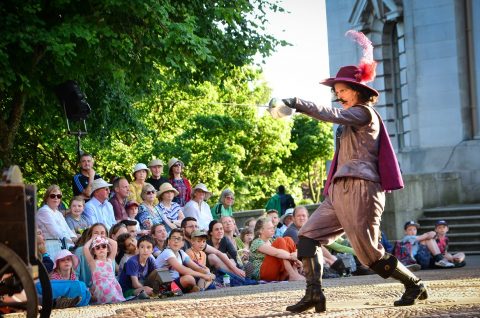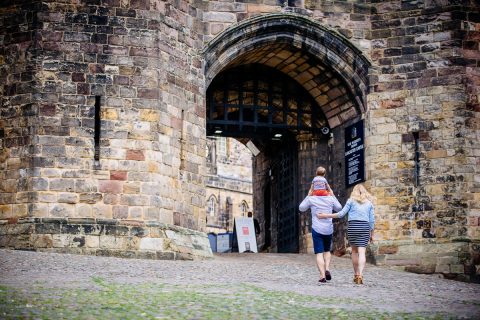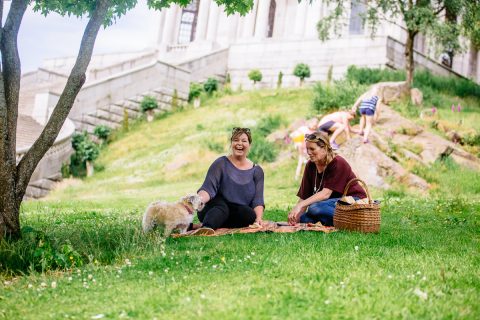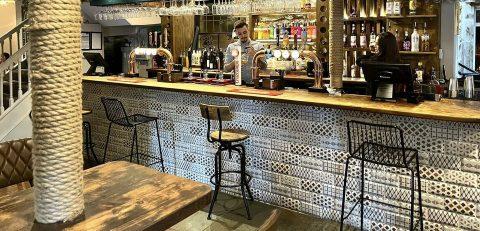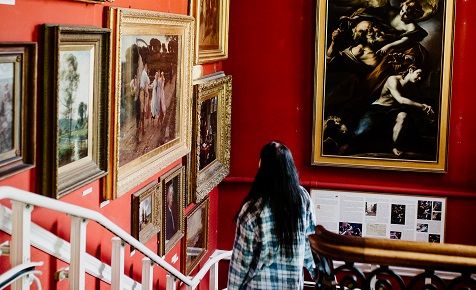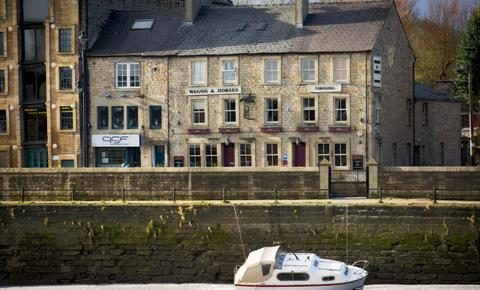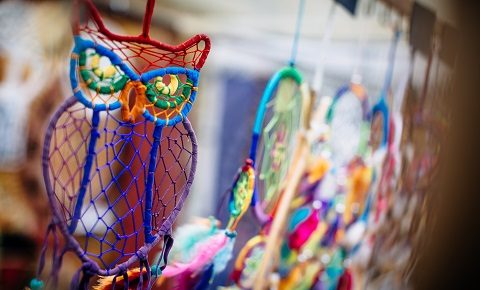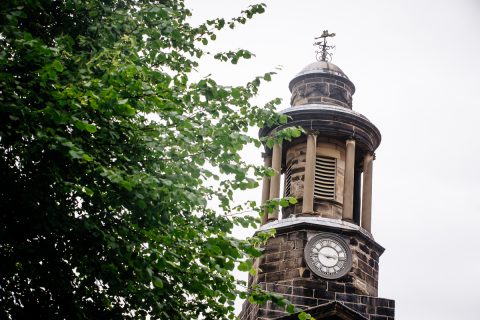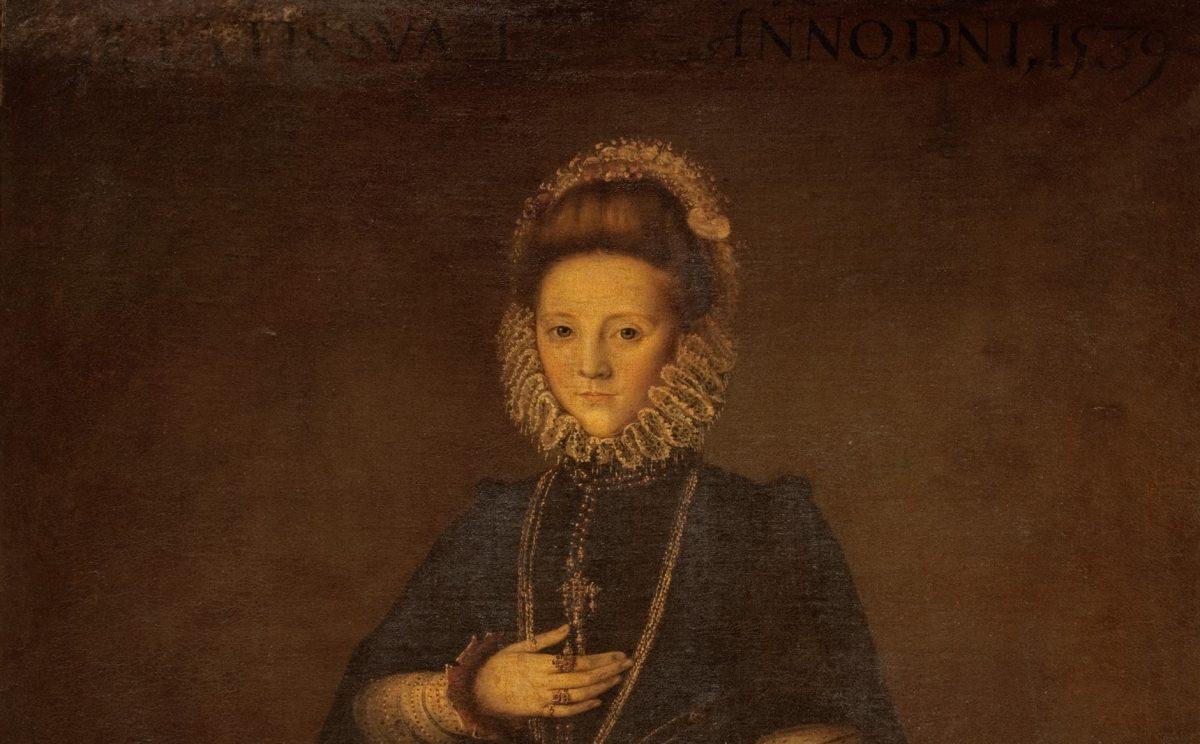Portrait of Princess Catalina Micaela, Daughter of Philip II of Spain (1579)
 | Princess Catalina Micaela, Daughter of Philip II of Spain (1579) Attributed to Juan Pantoja de la Cruz (1554 – 1608) Oil on Canvas, 1579 Formerly titled Unknown Spanish Lady. Previously attributed to Alonso Sanchez Coella (1531 – 1588) Portrayed in full length, the sitter, The Infanta Catalina Micaela (1567 – 1597) is only 12 years old in this portrait but appears older because of the maturity in her pose and the style of her dress. This fascinating, almost life-size painting opens up 16th century Europe, the death of a King and a strong young woman from the De Medici family line and stepdaughter of Bloody Mary of England. |
It was common for royal children to be depicted as miniature adults; indeed, this portrait maintains the distant, severe, and inexpressive appearance set for members of the royal family, regardless of their age. Portraits were used within the royal family to show the healthy growth of the dynasty’s children. They were also necessary tools in matters of succession and matrimonial politics.
In this portrait, Catalina is wearing Spanish court dress made from very fine silk, lace, gold thread and velvet – fabrics meant to convey her indisputable status in society. Her ornate jewellery would have been family heirlooms. The rings are fine gems and pearls set in gold. In her right hand, she is holding her necklace that reaches to the bottom of her basque. She holds gloves in her left hand.
The Latin text reads AETATIS SUAE 12 ANNO DNI. 1539 (at the age of 12 in the year of our Lord 1539). The date of 1539 was queried in 1955 and was shown by ultra-violet examination to be covering a later date of 1579. As Catalina was not born until 1567, this irregularity is certainly unusual.
WHO WAS THE INFANTA CATALINA?
Catalina Micaela was the youngest of the two daughters of King Philip II of Spain and his third wife Elisabeth of Valois. She was likely named after her grandmother, the formidable Catherine de Medici, who was named by historians as “the most important woman in Europe in the 16th century”.
Catalina and her sister Isabella unexpectedly became heirs to the Spanish Empire following the sudden deaths of their half-brother and mother. Without their mother, Catalina and Isabella were put under the care of her Lady-in-Waiting Sofonisba Anguissola, who was also a highly skilled court artist. Her childhood seemed to be a happy one, accompanied by her favorite animal companions, including a long-tailed marmoset from Brazil, for which she had court dressmakers create smocks and other clothes.
Catalina grew to be a strong and determined girl. She was described as beautiful and intelligent, as well as arrogant and very aware of her powerful status.
A NEW LIFE IN ITALY
When she was 18 Catherine married Charles Emmanuel I, Duke of Savoy (a strategic marriage) and moved to Turin, Italy. Her father sent her with strict instructions on how to run her household and uphold the Spanish royal court’s very formal rules of etiquette. Catalina, however, struggled to enforce the rules. Hardly surprising when she was a very young and newly married duchess in a foreign land. She had to adapt to a new country and a new life, let alone try to enforce new rules of etiquette.
Her husband’s physical disability (curvature of the spine) did not seem to impede his military prowess, nor his marriage. By 1597 Catherine had given birth to ten children: Philip Emmanuel (1586–1605), Victor Amadeus (1587–1637), Emanuel Filibert of Savoy (1588–1624), Margaret (1589–1655), Isabella (1591–1626), Maurice (1593–1657), Maria Apollonia (1594–1656), Francesca Caterina (1595–1640), Thomas Francis (1596–1656) and Giovanna (born and died 1597). Charles also fathered at least another eleven children with his numerous mistresses.
WHY IS IT IN OUR COLLECTION?
This portrait came into our possession from the collection of the Storey Institute in 1976. As beautiful as it is, and as significant as it is to the art world, it has no connection to Lancaster.
Works by this artist are also held in the Royal Collection, returned to the collection after being sold in the Commonwealth Sale which followed the execution of King Charles I between 1649-51. Cromwell’s republican regime sold off nearly 2,000 paintings, tapestries, statues, and drawings in an attempt to settle the dead king’s enormous debts. It is possible that this painting came from the court of King Charles and was caught up in the disposal of art. There is one unidentified painting in the sale inventory that fits this description, entitled Child or Spanish Lady, which would tie in with what this painting was formerly known as.
Many paintings were given to tradesmen in lieu of outstanding payment for their work for the King. The painting in the royal inventory was sold to a buyer called Jackson for £2, which is the equivalent today of £298.03 (approximately 38 days labour for a skilled tradesman). *
If that is indeed where the painting originated. We could not and would not acquire work such as this today. As you can see, years of chimney smoke have darkened the painting, leaving it needing conservation cleaning; a process that is both lengthy and expensive.
*Inflation calculator | Bank of England


